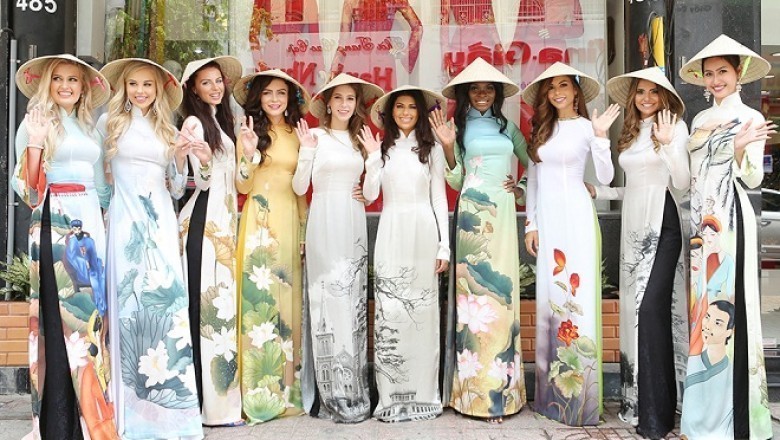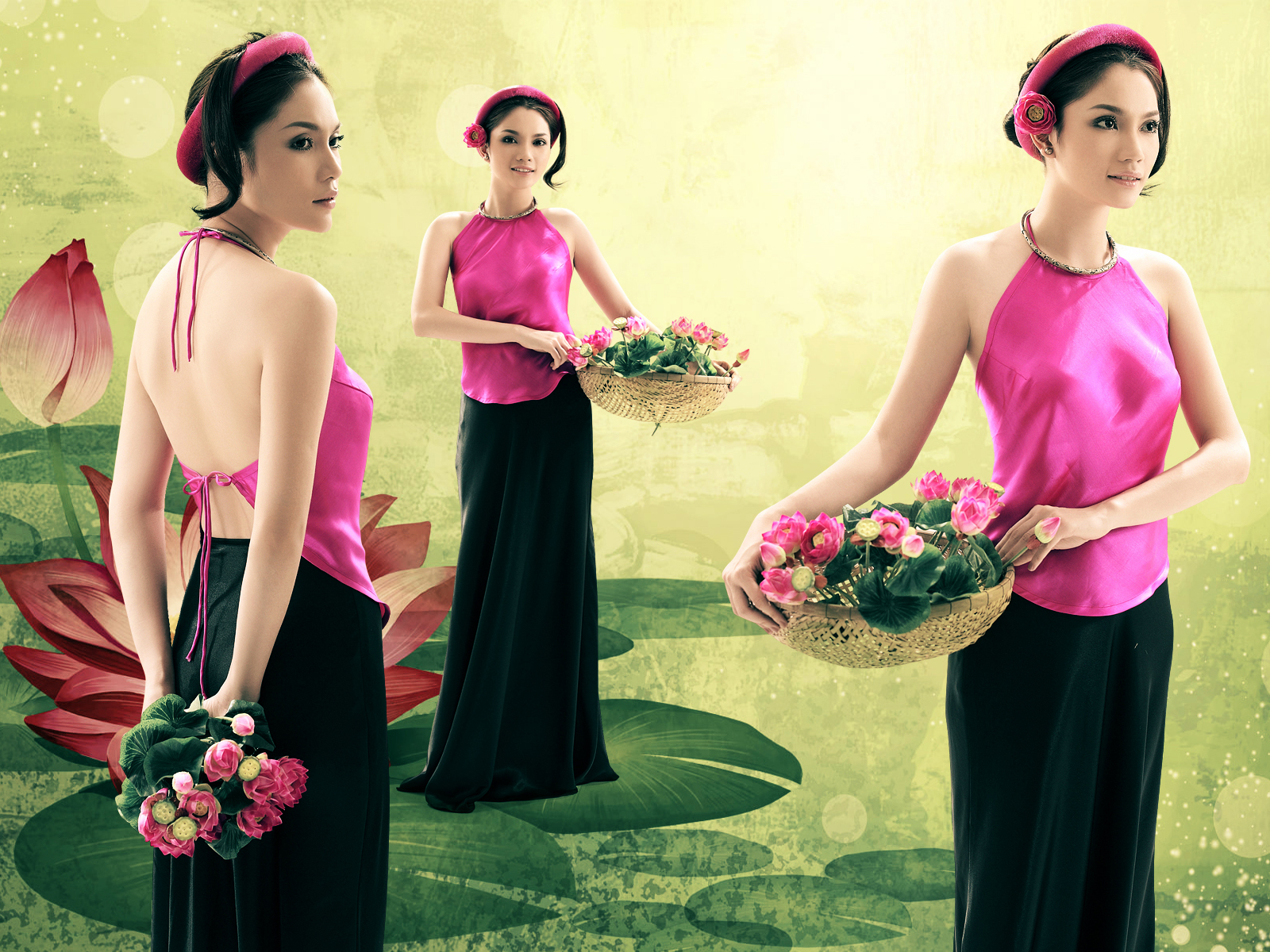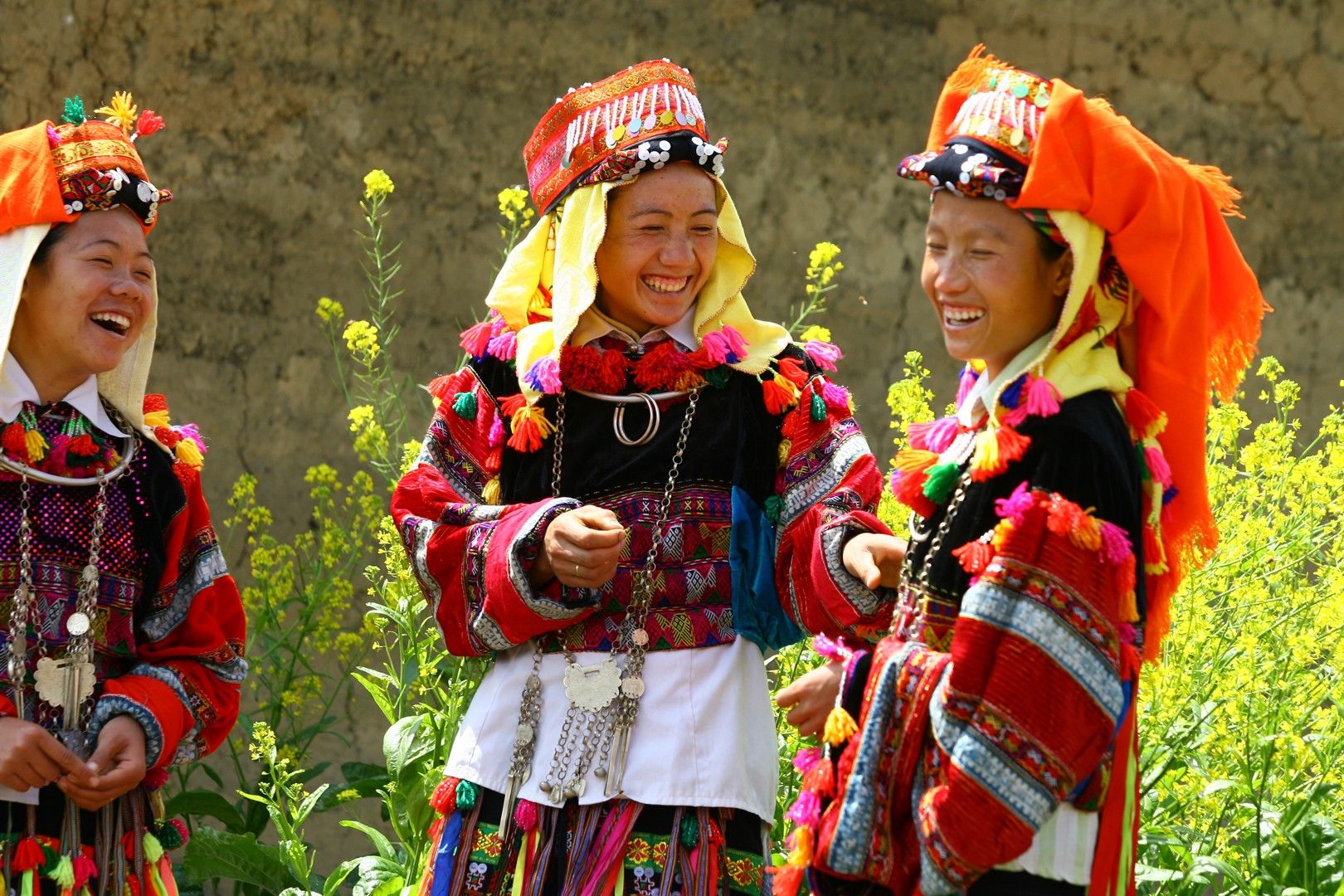By Lawrence Haywood, Mar 1, 2025
If there’s one thing that people can’t get enough of from Vietnam, it’s the clothes. The colourful, intricately detailed Vietnamese clothing has become well-known worldwide for its bold look and for the variety of individual stories woven into its fabric.
The traditional dress, the Vietnamese Ao Dai, is a garment of intense national pride for Vietnamese people; it is highly-revered inside Vietnam as well as out for its sleek elegance. However, the wealth of Vietnamese costumes runs deep, and a population on the cusp of 100 million, including 54 individual ethnic backgrounds, creates a lot of scope for fashion.
The textile industry continues to reach a huge market outside of Vietnam. In the first quarter of 2018, textiles were the country's second-biggest export, creating $7.83 billion, which is 15% higher than last year.
So why is there such a scramble for Vietnamese textiles? What are the traditional Vietnamese Dresses that create such a stir around the world? Let Incredible Asia Journeys tell you the secret!
There’s no other place to begin than the iconic Ao Dai Vietnam. Pronounced ‘ow zai’ in the North and ‘ow’ yai’ in the South, the words literally translate to ‘Vietnamese Long Dress’. The Ao Dai has made incredible transformations from its birth during the 15th century to today where it remains a very popular garment for special events like Vietnamese New Year, weddings, graduations and various national holidays.

Ao Dai in Vietnamese New Year
The original Ao Dai was a horrendously unflattering affair dreamt up by a Southern Vietnamese lord, Lord Nguyen. It was a blended design borrowed from the Chinese Ming Dynasty and Cham ethnic tribe, featuring a long and baggy, colourless tunic with four panels and worn by both men and women. Over the years, it went through many transformations. Men gradually lost enthusiasm for the whole thing and female members of high-society began adopting an increasingly slimmer and more elaborate version while peasants remained with the more practical, conservative option.
It wasn’t until French colonialism arrived that the Ao Dai took off. Cat Tuong was a French-trained artist who revolutionalised what soon became the official national dress, making it much more fitted and in true colonial style, requiring a tight-fitting corset. That modern version went through the standard 20th-century fashion mill, appearing in many, many different styles throughout the decades until its appearance today as the simple, colourful and graceful Vietnamese national dress.

Ao Dai
Modern day Ao Dai are very popular holiday souvenirs from Vietnam and are great to wear at either formal or informal events.

Modern-day Ao Dai
Several tailors in Hanoi range from just $30 to about $200, but anyone on a stringent budget might consider heading to nearby Van Phuc Silk Village, where entire Ao Dai can be picked up for $15.
You’ll never see more Ao Dai as you do in Hoi An. The UNESCO World Heritage-listed town in the centre of the country has Vietnamese tradition at its heart, with even the local schoolgirls sporting ao dai as their uniform. It’s hard to move for the number of tailors who will create your perfectly fitted ao dai, and you will have an incredible amount of choice when it comes to materials and style.
Ho Chi Minh City has a good amount of markets where fittings can be done, but anyone scared of the authenticity of the material can look around a boutique, where standard Ao Dai ranges from $13 to around $200. For anyone with a bit more disposable cash, finely embroidered and luxury silk ao dai can be bought from about $300 to $1000.
This may not be as recognisable by name alone for most tourists, but one look at the Vietnamese conical hat and all you can think of is Vietnam. The Nón Lá Vietnam comes in very handy in the countryside – if it’s not raining then it’s hot, if it’s not hot then it’s raining, if it’s not one or the other then it’s both. The Non La provides full protection from these elements while also gracing its wearer with a humble stylishness, one that has worked its way out of years of simple practicality to become somewhat of a modern-day art canvas.

Non La Vietnam
The ascent of the Vietnamese cone hat to a symbol of national pride started quite possibly about 3000 years ago, depicted on two ancient relics from around this time. Very little has changed in terms of the design; the 16 circles of bamboo covered with palm leaf are the standard formula and it is one of the few crafts that has resisted any form of industrialisation because machines cannot replicate the level of human dexterity necessary to make it.
Nowadays, the Non La features regularly in traditional dance performances and in the world of art, with many artisans around the country capable of stitching romantic images into hats. This is especially the case in Hue, a city near the centre of the country where the Non La gained the most popular because of the region’s persistent rainfall and sunshine. Here, the Non La became the Non Bai Tho, translating to ‘poem hat’, a truly amazing regional variation that features poems and images of Vietnamese folklore that only become visible in sunlight.

Non Bai Tho
The Vietnam cone hat is a popular yet not easily transportable souvenir among tourists. In the big cities of Hanoi and Ho Chi Minh City, tourists can find cheap productions in souvenir shops around the centres, starting from as little as $3. Dong Xuan Market in Hanoi and Binh Tay Market in HCMC are the best areas to haggle and get a great deal.
Hue is the best place to get a genuine and beautiful Non Bai Tho. There are 15 villages around Hue that have Non Bai Tho production as their main trade. Visit any of these villages personally to get the most authentic, best deal on Non La in the country.
A less popular item of Vietnamese traditional clothing among travellers, the Ao Yem Vietnam is a very simple garment worn as underclothing or on its own. It comprises merely of a single square piece of cloth with corners cut away and straps added, tied loosely around the body with a rounded collar (co xay) or a V-neck (co xe) at the top.
The Ao Yem Vietnam has a similar story to many other items of Vietnamese national clothing. It was first depicted at a similar time to the Ao Dai and has gone through very little stylistic change over the hundreds of years since then. An Ao Yem is usually one single colour and it’s normally pretty mild, but the more vivid and bold Ao Yem come out during festival time in the villages around Vietnam.

Ao Yem
The Ao Yem fell out of fashion in the 20th century with the invention of the bra, but tourists can still find them in shopping malls around the country. Hoi An would be the best place to get this beautiful garment tailor-made; its simple nature means it should be made fairly quickly and at a very reasonable price.
Check the best trips to Hue and Hoi An to discover more about the land of Vietnamese traditional costumes:
While 86% of the population of Vietnam is of the ethnic background ‘Kinh’, the remaining 14% are members of various ethnic minority tribes around the country, each forging a specific identity from before Vietnam was unified as one country. In Vietnam, ethnic tribe clothing can vary wildly depending on the tribe’s customs, but most share a common theme of featuring very colourful and very elaborate repeated patterns, with many clashing items worn at once.
The Hmong hill tribe comprise about 1.2% of the country’s population and is split into subsections depending on the colour of the dresses that they wear: Black, White, Blue, Red, Green and Flower H’mong. They live in the northern provinces of Vietnam and, for those who can, congregate every Sunday at Bac Ha Market in Sapa; a usually drab stretch of concrete that comes alive with the amazing colours of the H’mong traditional clothing. Tourists can visit this market to find intricate, hand-woven labours of love for around $10.
Check our best tours to Sapa to discover more about Vietnam Ethnic Tribal Dress:

H'mong's Dress
A more modest representative of the Vietnam hill tribes, the clothes of the Dao are not quite as vibrant as the H’mong, but they are still sub-categorised depending on their attire: Red Dao, the Dao with long tunics, the Dao with white trousers etc. The Red Dao are the most famous of this group, donning a light, flowery top with a bright red hat featuring an array of tassels and silver coins. There are Red Dao villages close to Sapa that sell full outfits to foreigners. Heading straight to the source and buying from them is a great way to help the local community.

Dao's Dress
Split into three main groups: the Black Lolo, Red Lolo and Flower Lolo, these northern Vietnamese tribes have some of the most labour-intensive clothing to make. The plain black of the turban and trousers is a canvas for some very intricate patterns of many shapes and sizes. The repeating motifs can take months to create, meaning the prices for these wonderfully ornate pieces of Vietnamese ethnic tribe dress are usually a bit higher than others.

Lolo people's dress